EarthFest Live
Creative Solutions for a New World
Presented by Creatively United and Ecoforestry Institute Society, supported by The Gail O’Riordan Climate and the Arts Legacy Fund
Creatively United for the Planet is an active non-profit society dedicated to showcasing positive solutions that enhance environmental stewardship and conservation in existence since 2012. From 2012-2020, we annually produced one of North America’s largest zero-waste Earth Week festivals and sustainability showcases with thousands of people in attendance.
When Covid interrupted our plans for a live festival in honour of the 50th anniversary of Earth Day in 2020, we quickly pivoted to producing more than 45 free webinars on a wide variety of innovative solutions to some of our region’s most pressing issues that continue to air on community television. This is a small sampling of those first online webinars. To see more, please visit Creatively United’s YouTube channel.
The Transformative Moment
Global Reset & The Future of Hope
We need a New World Order focused on restoring nature’s ecosystems, meeting humanity’s basic needs and ensuring that our public health is guaranteed. Government’s fiscal capacity must not bail out outdated carbon intensive industries, but ensure a just transition to a low carbon economy that is fair to all, leaves no one behind and makes society more resilient to change.
UN climate and water specialist, Bob Sandford, speaks eloquently in this opening presentation for the need for a global reset to transform the way we currently live to meet these universal principles.
Presenter Bio (Click to expand)
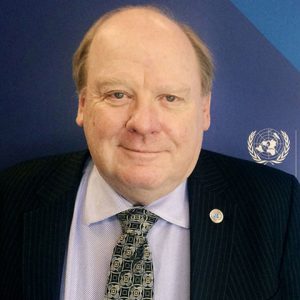 Bob Sandford
Bob Sandford
Bob Sandford holds the Global Water Futures Chair in Water and Climate Security at the United Nations University Institute for Water, Environment and Health. In this capacity Bob was the co-author of the UN Water in the World We Want report on post-2015 global sustainable development goals relating to water. He is also lead author of Canada in the Global World, a new United Nations expert report examining the capacity of Canada’s water sector to meet and help others meet the United Nations 2030 Transforming Our World water-related Sustainable Development Goals.
See Bob’s full bio here.
Special Musical Guest
 Brian Yoon
Brian Yoon
Cellist Brian Yoon has been described by the CBC (Canadian Broadasting Corporation) as “Canada’s next cello superstar”. Currently the Principal Cello of the Victoria Symphony, he has been a guest principal with the Kingston Symphony and the National Arts Centre Orchestra.
Additional Q&A (Click to expand)
These are additional questions and answers that the panelists did not have time to answer during the live webinar.
Q. Could you PLEASE acknowledge the ubiquitous support decade after decade, for the personal vehicle with eventually 2 or 3 per family, as the means of transportation rather than communal models? Govts everywhere have accepted this and spent most of their transportation budgets providing infrastructure for the auto companies. And a huge cost as a result for healthcare. Media earned their bread and butter from advertising these auto co. products.
A. Of course. It is the same with radio, television and newspapers. Advertisers have enormous sway and control the news. If you want to see how it works, watch the movie Wagging The Dog. The mainstream media cannot be trusted to tell the truth, especially when television networks and newspapers are owned by corporations or rich libertarians. That is why public and independent media are so critical.
– Bob Sandford
Q. What do you think of fossil fuel subsidies that require the full extraction of individual wells like they are doing in BC? This practice is being promoted as a better environmental decision.
A. I am of the view that that permits should not be granted for any resource development activity without a bond being put up that covers the full cost of remediation. This is a simple matter of sound regulatory control; we shouldn’t need subsidies that guarantee that resource development interests meet the conditions of their permits.
– Bob Sandford
Q. Bob, whether for global pandemics or climate change, how exactly do you envison effective “global unified action and coordination/collaboration)? This appears to be a persistant gap in our discussions, but philosophers from Immanuel Kant to Nancy Fraser have grappled with the question of global justice (noted in my book Justice and Ethics in Tourism, 2019). UN and WHO lack regulatory power and are struggling with ‘coodination’ it seems.
A. First of all, it is good to hear from you again Tazim, it has been some time. I know your principle interest is in tourism.
Within this context of the “global unified action” to which you have referred, I worry about the future of tourism. The sector has historically tended to look at the climate disruption threat through the lens of tourism instead of looking at tourism through the climate lens.
Looking from the outside, the tourism bubble appears to be about to burst for a number of reasons all of which will be directly caused or indirectly exacerbated by climate warming. Out of control over-tourism can mock and overshadow the sincere efforts of even the best operators to be responsible for sustainable protection of core offerings. The ethics don’t add up.
But there are other vulnerabilities as the pandemic has put into full relief. Growing political tensions widely and the need for greater and greater security to protect travellers is making it more dangerous, expensive and less pleasant to travel. On top of this climate disruption in the form of heat waves, floods, snow storms and wildfire are going to make travel more unpredictable and more dangerous and introduce new and greater liability for tourism providers.
Unchecked climate disruption will eventually rob even developed countries of much of the affluence that makes travel affordable. If there is no action on emissions at a certain point, we are likely realize that we really do face a planetary emergency and it will ultimately be seen that we urgently need to reduce carbon dioxide emissions if we are to have any hope of preserving our prosperity. While it will be one of the last things we as a society will want to give up, unnecessary travel, especially by air, which has already been hammered by the pandemic, will have to be on the block.
To responsibly overcome these threats, it has to be understood that simply restoring tourism development at this time is not enough. As you noted the last time we talked, more and more heads on bed and bums on seats are not the answer. Tourism has to refine what it is. Moving in the direction of regenerative tourism is not an option.
– Bob Sandford
Q. Why have oil companies not been legally held to their contractual obligation to clean up their mess?
A. Largely because they spend so much money on lobbyists, contribute so much to election campaigns in terms not just of money but organizational capacity; and when the government they want is elected, their people end up in key positions within both the executive and administrative branches of the government. These people make sure what the energy sector paid to have happen in terms of public policy is delivered upon. In what are called petrostates – which is to say those states that rely disproportionately on oil revenues – government is indistinguishable from fossil fuel interests they represent.
– Bob Sandford
Q. Do you think Trudeau is now starting to ‘get it’… hence his 1.7B to well clean up instead of to corps?
A. In a word, yes.
– Bob Sandford
Q. You say that the UN Sustainability Goals are a path through this crisis to the new world that you speak about. How do we or our governments engage with this material? The city of Victoria has endorsed the Earth Charter as have many organizations and it has been a challenge to bring the Charter to the work of the city.
A. The first thing that must be done is Canada is that governments and the private sector have to familiarize themselves with the fact that the UN has radically redefined sustainable development in a way that transcends the notion that has existed in Canada for twenty years that it can mean anything we want it to be, including superficial applications that simply perpetuate the status quo under the guise of using meaningless sustainable development jargon that conceals weasel words. If a country wants to be truly and meaningfully sustainable, it has to meet 17 linked goals. Not just the one or two that they can claim they are already working on, but all of them. We are not doing that yet in Canada, but we could be if, in the wake of this pandemic, we decided to.
– Bob Sandford
Q. Surely it is too simplistic to see the current differences around COVID-19 as a battle between respect for science and crass politics. Isn’t it much more a different weightings on the medical evidence around lives lost to disease as compared with lives lost to poverty or other socio-economic stresses. In decisions in the face of risk, different perspectives depending on one’s background and position—all legitimate positions in a deliberative democracy?
A. I don’t know. Is it too simplistic to see the current difference around the COVID-19 as a battle between respect for science and crass politics? I don’t accept that there is a difference in the weightings on medical evidence around lives lost to the pandemic compared to lives lost to poverty and other socio-economic stresses. What is happening goes beyond poverty and other socio-economic stresses.
The Oxford Dictionary defines a crime against humanity as “a deliberate act, typically as part of a systematic campaign that causes human suffering or death on a large scale.” Interesting. That definition might lead to one asking how many have been and will be hurt or killed by climate disruption? The answer is millions. Between 2008 and 2016 alone, 21.5 million people were displaced annually by climate disruption and extreme weather events. And hundreds of millions more to come. It is time to take ALL scientific evidence seriously.
– Bob Sandford
Q. The COVID situation has defacto merged the Fedreal Reserve and the Treasury. This means that the Federal Reserve is run by POTUS. This may allow POTUS to push Stockmarkets to new all time highs further concentrating wealth to levels pre-WWI. Will bodies like the UN hold any sway in the future where authoritarian governments and oligarichies dominate?
A. Thank you, Joe, for that question. You and I have talked about this before. The answer to your question relies heavily on whether or not nationalistic populism continues to hold sway in an increasingly divided world.
A divided and polarized electorate is a perfect mechanism for sustaining the status quo. But here again, we confront the unthinkable. It is now clear that climate disruption threatens the end of the nation state as we know it today. In the Anthropocene it will no longer be possible to conceive of a nation as consisting only as a population within a defined territory. No nation will be able to isolate itself from forces that cannot be confined by boundaries. This realization is leading to what is being call the politics of “the armed life boat.”
We see these politics widely in the form of new attention to identifying and rooting out perceived enemies, the militarization of borders and rapidly expanding anti-migrant sentiment. With the deep recognition that there isn’t enough for everyone, people who have don’t want to lose or share what they have. But the armed life boat sinks when the migration comes not from without but from within. This for many powerful nations is a reason to defend the status quo.
At the heart of the resistance to climate action is the fact that some countries are prepared to preserve the status quo at any cost. If that means that hundreds of millions elsewhere are displaced and millions lose their lives, so be it.
This, I can assure you, is a frustrating issue for the UN. It is difficult to make the case – no matter how below the radar it is done – that the world’s poor should make sacrifices so that the rich can continue to enjoy their wealth. And by not acting on the climate threat that is what we are doing. We are condemning millions to misery so we can keep what we have.
Unfortunately, the bare fact continues to stare us in the eye. The climate circumstances we face are the distillation of all of human history.
What we face is an expression of the entirety of our being over time. If we want to get through this bottleneck in history there can be no “them and us” in addressing the climate threat. The threat is the sum total of the entire human journey. It remains to be seen if the UN, with its deep commitment to leaving no one behind, will survive this era. Unless the informed demand it, it may not.
-Bob Sandford
Q. How about your organization looking at Canadian and International funds directed towards militarism vs life enhancing efforts? Canada’s DND $ has had big increases over the years while Enviro Canada has flatline. $32Billion DND 1.8Billion EC. Hazel Henderson and other women have been trying to have militarism addressed for decades.
A. UN Secretary-General has stated unequivocally that even tolerating war in the situation in which we find the world at the moment is madness. The same can be said for military spending. But on it goes. Armies are helpful in national emergencies and in peace-keeping. Using them now, for these purposes, but we have to end war for good, now.
Q. So, we need 4 things: 1) economic shift 2) restoration focus 3) see this crisis as a dry run for creating hopeful change 4) reach towards the millenium development goals. But the wealthy, older, decision-makers haven’t taken the necessary steps to make these changes. This is because the central issue here that we need a spiritual shift. To honour life more than wealth, to honour functional healthy community connections more than power, to honour diversity of culture and ecosystem. Where is this heart-shift most evident right now? Who is at the forefront of shifting our spiritual values?
A. I fully agree with you Amanda. Geraldine Manson and Dr Nancy Turner in the second of the EarthFest presentations clearly spoke to the importance of indigenous knowledge and wisdom guiding us towards a more spiritually based outcome for a true ecological civilization. The exciting aspect of the transformation moment is that as we grapple with climate change and biodiversity loss we will not be able to create a ‘Safe and Just’ state for our planet without a spiritual revolution. I truly believe that we will all be better off after the disruption of adapting to a New World because it cannot happen without humanity being in touch again with its spiritual roots.
– Jon O’Riordan
Q. I come from a rural area in Saskatchewan where conventional farming is the norm. There is a lot of climate change denial and dismissal, But, there is also an acceptance that consumer demand will require producers to move towards a more sustainable agricultural approach. The frustration that I hear around this from producers, however, is that no one in agri-business can properly define “sustainabilty” in terms of agriculture. It is viewed as a buzzword with not much meaning. How would you define agricultural sustainability and what would you recommend in terms of its implementation?
A. Actually, what we are seeing in Saskatchewan and across the prairies is very interesting. We are seeing more and more farmers that accept that climate change is going to impact them and want to adapt in advance to make sure that their farming practices are sustainable. Many have complained, however, that they are not getting the support they need from big agriculture. In one forum, Alberta farmers complained that fertilizer producers and other major corporations were encouraging them to fertilize even when the snow is still on their fields, which may be good for fertilizer producers and seed companies but certainly won’t help matters of nutrient loading and eutrophication of downstream lakes and water courses We are hearing more and more say that what they really need is better integrated flood and drought prediction and forecasting which will not be made available by big agricultural conglomerates by only through federally funding scientific research connected in the end to the needs of farmers in each respective province. We are working with the Global Water Futures Research Program to make that kind of prediction and forecasting possible, hopefully within the next three years.
– Bob Sandford
Q. Hope is not a strategy. How do you feel about developing a North American Energy strategy where all stakeholders are part of the solution in the transition? How about using our advanced technologies and carbon sources like LNG to displace dirty energy production in countries where most of the climate change drivers are taking place?
A. Your point is “that Alberta is part of the ethical oil solution compared to other rogue state producers around the world and of course big polluters like China and India that would benefit from using Alberta’s technologies and less dirty fuels.” I don’t disagree with that on general terms, but in essence that argument is just a self-justification. There is something else much larger that puts limits on the legitimacy of this argument. The way it stands now is that while it would be lovely if our situation globally wasn’t as it is now or it could be changed by way of some as yet unimagined technological advance, that is not the reality. We need to be halting the burning of anyone’s fossil fuel exports – rogue state producers or anyone else. If we don’t do that soon – beginning with ending fossil fuel subsidies – I regret that our children and grandchildren are not going to live in a very happy or stable world. We, ourselves, have already begun to see the horror, but I can tell you from all the science I have seen, particularly on ocean acidification, sea level rise, threats to food production and other effects of runaway warming, that we ain’t seen anything yet compared to what they will experience.
– Bob Sandford
Q. What is the future of the UNFCCC, in your view, in the context of COP26 having recently been postponed? Do we need it urgently? Or can we make (perhaps more) progress through other means?
A. As I have mentioned, the risk at that moment is that our society will lapse into some different but still functionally unaltered version of what we had before the pandemic which would be a disaster leading only to the next disasters. The world won’t be and shouldn’t be the same again. Our interests should reside in not re-creating the world we had, but the world we want.
The very valid point has been made that there will be many transformational moments spread over time in a broad range of sectors of our society and we need to identify and track as many of these as we can. It quickly became clear that to do that we need to assemble a diverse group of thoughtful people with the goal of identifying when an optimal range of diverse transformational moments might align and then to determine how best to act on those moments locally, nationally and globally when that alignment occurs. We have done that. An astonishing array of extraordinarily competent people have taken up the Invitation. If you are interested in this Invitation, Frances will provide my contacts and I will be happy to share all details.
– Bob Sandford
Q. Jon – LFrackedG pipeline and export; Peace River Site ‘C’ovid Dam; TMX; What do you think of our latest BC govt track record?
A. The Provincial government’s clean BC policy to reduce carbon emissions cannot meet its legislated targets with the inclusion of LNG developments. However, the main policy for reducing carbon emissions will be increased use of electricity totally from renewable sources. This means electric cars; electric heat pumps; and electric pumps for recycling water and re using all waste productively
– Jon O’Riordan
Transformation to a More Sustainable Future: The Role of Indigenous Wisdom
A Presentation by the Ecoforestry Institute Society
Indigenous peoples have lived here for millennia and gained wisdom and knowledge on how to care for Earth’s ecosystems.
Elder Geraldine Manson and Dr. Nancy Turner eloquently describe these values and how they must be integrated into a caring and nature-based society.
Presenter Bios (Click to expand)
 Elder Geraldine Manson
Elder Geraldine Manson
Geraldine has worked for her community since 1980 gives credit for her cultural wisdom and education to her Elders, present, and Elders who have passed on. As the Elders’ Coordinator for Snuneymuxw First Nations, she carries many other responsibilities that relate to culture and traditions in the community. Geraldine has served her community as elected council-member. She was mentored by Dr. Ellen White (Kwulasulwut) in the traditional cultural practices of the Snuneymuxw people.
 Dr. Nancy Tuner
Dr. Nancy Tuner
Nancy Turner is an ethnobotanist whose research integrates the fields of botany and ecology with anthropology, geography and linguistics, among others. She is interested in the traditional knowledge systems and traditional land and resource management systems of Indigenous Peoples, particularly in western Canada.
Nancy has worked with First Nations elders and cultural specialists in northwestern North America for over 40 years, collaborating with Indigenous communities to help document, retain and promote their traditional knowledge of plants and habitats, including Indigenous foods, materials and medicines, as well as language and vocabulary relating to plants and environments.
A New Ecological Civilization
A New Ecological Civilization based on the economics of kindness. The new economy must create new jobs in a clean and green transition to renewable energy to flatten the carbon emissions curve. Economic power must shift from corporations with a singular motive to maximize shareholder values to an economy based on cooperatives, which are self organizing, self reliant and serve the needs of communities.
Guy Dauncey demonstrates these values in this excellent presentation.
Presenter Bio (Click to expand)
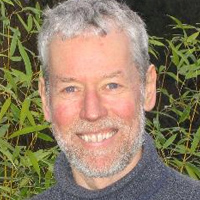
Guy Dauncey
Guy Dauncey is a futurist, anthropological economist, plus founder of the BC Sustainable Energy Association, and the author or co-author of ten books, including The Climate Challenge: 101 Solutions to Global Warming and Journey to the Future: A Better World Is Possible. He is currently competing his next book on The Economics of Kindness. He is an Honorary Member of the Planning Institute of BC, a Fellow of the Royal Society for the Arts, and President of the Yellow Point Ecological Society.
Creating a Liveable Future
A Youth Perspective
Young people around the world are demanding faster and more ambitious action on transitions to a low carbon economy, and to respecting the nurturing roles of the planet. We cannot continue to fail the voices and aspirations of the younger generation. They have to be supported as they take the place of current adults to steer us all to make this transformational change.
This panel of nine youth present fascinating insights into their dreams and concerns about transformative change for a New World. Their conversation is warmly articulate and inspiring. They give older generations incentive to work with them to ‘bend the carbon curve’ and leave the world in better shape for them to inherit.
Presenter Bios (Click to expand)
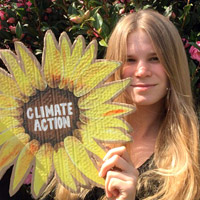 Katia Bannister
Katia Bannister
Katia Bannister is a sixteen year old youth climate activist and community organizer. She lives on Thetis Island, on the unceded territory of the Hul’q’umi’num speaking Penelakut Tribe. Katia is currently learning to speak Hul’q’umi’num and is taking a language revitalization course. Katia leads the Cowichan Valley Earth Guardians crew and is a member of the Vote16BC campaign, BC Youth Council and City of Duncan Environmental and Sustainability Committee. In the future Katia hopes to pursue a career in ethnoecology.
 Emma-Jane Burian
Emma-Jane Burian
Emma -Jane Burian is a 2020 Victoria Leadership Award winner, grade 12 student and climate activist who organizes global and monthly climate strikes with Our Earth, Our Future on the beautiful homelands of the Lekwungen and W̱SÁNEĆ peoples in Victoria, BC.
She has been a member of The City of Victoria Youth Council and has participated in organizing community gatherings like Meatless Monday potlucks, and advocating for fare-free transit for youth in her region. She also serves as a director on the Esquimalt-Saanich-Sooke Green Party EDA. She is passionate about climate justice and engaging youth in politics to build resilient and strong communities for a better world.
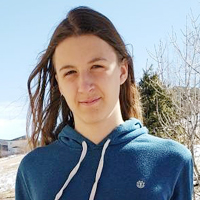 Kylen Glass
Kylen Glass
Kylen Glass is a youth activist, organizer, and student from Mohkinstsis, the traditional territories of the Blackfoot people, also known as Calgary, Alberta. Kylen volunteers with a local Fridays for Future group to organize strikes every week, as well as larger global strikes, plus collaborates with Climate Strike Canada to support climate action and a Green New Deal for Canada.
Kylen is passionate about climate justice and transforming our social and economic systems to create a sustainable and inclusive future for all people by applying the principles of regenerative society and permaculture to mitigate and respond to the climate crisis as a united humanity.
 Jamie Hunter
Jamie Hunter
Jamie Hunter is a 20-year old youth climate striker and peace studies student in Nelson BC. Along with the rest of Nelson Fridays for Future team, he has organized multiple climate strikes in the past year, including one with over 2,000 people present, in a town of just 10,000.
Jamie is also becoming actively involved in the Stop Ecocide Campaign in Canada, which is inspired by the campaign started in the UK, which aims to make the crime of ecocide a criminal offence, both at the international criminal court and in domestic law. He believes that along with education and personal decisions, laws such as this are critical in order for us to move towards climate justice.
 Ella Kruus
Ella Kruus
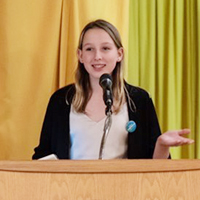 Grace Sinats
Grace Sinats
Grace Sinats is a Grade 9 student who organizes climate events with Our Earth, Our Future, a climate activism group located on Lekwungen and W̱SÁNEĆ territories.
She is an active member of the City of Victoria youth council and also serves as a director on the Esquimalt-Saanich-Sooke Green Party EDA. Her article, We Must Lead with Love, has been prominently featured in the Cowichan Valley Voice. She is advocate for Indigenous sovereignty and fare free youth transit across the CRD. She has taken inspiration from her teachers Mark Neufeld and Joanna Linger. Grace believes education must be at the forefront of climate action and building a better world.
 Julia Zirnhelt
Julia Zirnhelt
Julia Zirnhelt, from Williams Lake BC, organized the first climate strike in Williams Lake along with Ella Kruus and was a panelist at the Crossborder Conference 2020.
She is trying to make her small town a more sustainable and environmentally friendly place and is currently getting in contact with the city council and school trustees about making our system more green. Julia is organizing a Fridays for the Future project in her school district.
Creating One Planet, Self-Sustaining Communities
Future development must become carbon and water neutral, linked to local food production and less reliant on cars. Investors must take into account increasing risks associated with future climate change and finance innovative developments.
Pooran Desai, Jack Anderson, Ken Nentwig, and Chad Thiessen demonstrate a number of technologies for achieving these factors for a range of local developments. They also note that regulators must become more willing to take risks and approve innovative designs in a timely manner if such developments are to become cost effective.
Presenter Bios (Click to expand)
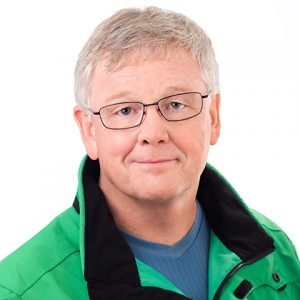 Jack Anderson
Jack Anderson
Jack Anderson has been a landmark figure for sustainable development for over a quarter century. Jack’s refined ability to make sustainable buildings a reality stems from his experience as a municipal planner and committee member. The skills and knowledge and insights Jack imparts were hard won as a trailblazer in the development of green building concepts.
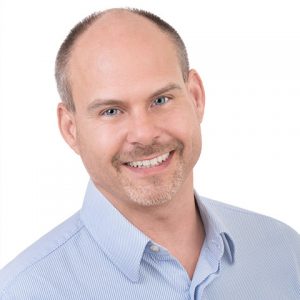 Chad Thiessen
Chad Thiessen
Drawing on his backgrounds in applied psychology, multifamily property development and mentoring entrepreneurs and businesses, Chad Thiessen is dedicated to the “Creation of a Global Tsunami of Sustainable Community Creation.”
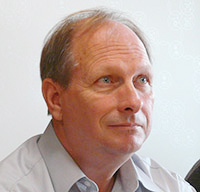 Ken Nentwig
Ken Nentwig
Ken Nentwig is deeply ingrained in the world of Rainwater Harvesting. Whether it is his involvement in committees responsible for setting national and global standards or his roles in teaching and implementing the core concepts, Rainwater Harvesting is central to Ken’s mission in life. As an educator and retired landscape architect, Ken’s certifications include: CANARM Lead Trainer, ASSE Certified in RWH Design/Install/Inspect, ARCSA/ASSE Trainer, CSA B805-18 Working Committee.
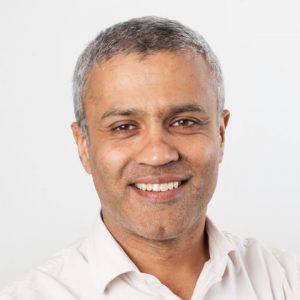 Pooran Desai
Pooran Desai
Pooran is serial entrepreneur, author and sustainability leader.
Pooran studied Medical Sciences and Neuroscience at Oxford and Cambridge Universities before co-founding environmental organisation, Bioregional, in 1994. Whilst at Bioregional he set up enterprises in sustainable forestry, farming and green real estate development.
In 1998, he put together the world-renowned Beddington Zero (fossil) Energy Development (BedZED ecovillage) and in 2002 he coined the term, One Planet Living®, subsequently leading on embedding the systems thinking into an international One Planet Living initiative used by cities around the world and on over $30bn of real estate development.
In 2004, he was made an Officer of the Order of the British Empire and in 2009 made an Honorary Fellow of the Royal Institute of British Architects. In 2011, with Bioregional co-founder, Sue Riddlestone, he was named European Social Entrepreneur of the Year by the World Economic Forum’s Schwab Foundation.
In 2019, he established a new company building OnePlanet.com, a revolutionary new digital platform for collaboration for systems change.
Additional Q&A (Click to expand)
These are additional questions and answers that the panelists did not have time to answer during the live webinar.
Q. Does your definition of renewable energy include the forest devastation source of biomass?
A. Solar power photo-voltaic panels are the primary power source planned but we have reason to consider vertical axis wind turbines as well. This is especially true with some of the new groundbreaking technologies such as perovskite solar power and massive improvements in wind turbine design. There is a willingness to consider having a backup Combined Heat and Power plant capable of burning wood-chips (with biochar and minimal smoke as a byproduct). However, even this option is unlikely as it involves combustion, which is inherently inefficient and carbon positive.
– Chad Thiessen
Q. As an ex regulator from an environmental agency I am interested if you ran into any barriers for getting approvals for your developments? Which jurisdictions were most progressive?
A. Policy makers from all major departments are shackled by regulations, ignorance and fear. The more informed the policy makers are, the more progressive the legislation is that controls their behaviour. The better connected and trained the bureaucratic overseers are the easier it is for them to see a path to the creation sustainable development.
Right now, many people who support sustainability from within the bureaucracy feel so restricted that they cannot follow what they know to be the most intelligent and wise long term course of action. Bureaucrats instead follow regulations they know to be deeply flawed, based on archaic development principles that are so misguided they should be illegal. The end result is the social, economic and environmental devastation our communities.
The only communities that are addressing this are those with leaders willing to stand up to the ignorance to do what is best for the long term interests of those they represent, often in opposition to huge external pressures. Support the wise long term thinking leaders and pressure the misguided ones to reframe their focus.
– Chad Thiessen
A. In the works on Green Neighbourhoods, I have found the CVRD in the Cowichan Valley to be the most progressive previously, but this can change with each local election. In this case, serving as agent for OUR EcoVillage with Brandy Gallagher, we were able to obtain the first zoning designation in Canada appropriate for an ecovillage. The RDN and the Municipality of North Cowichan were much more reserved and conservative in their review adding significant time and expense to the projects. We hope to change that in the near future.
One of the key barriers is that the zoning designation doesn’t generally include many of the green features that we are proposing to integrate so there is always much discussion about the use of other planning tools, covenants, strata bylaws, etc. that can be utilized to entrench the green principles into the approvals.
– Jack Anderson
Q. OnePlanet involves small and new communities. Please comment about fitting into change in existing, large cities.
A. To save our planet we must learn to adopt green principles into all levels of human habitat including the urban centers. While this is not an area I have been able to apply myself as I live in a more rural area of the country, I am particularly impressed with the City Repair movement that has arisen out of Portland Oregon in the USA which is worthy of a google and shows how people are finding community within the anonymity of urban metropolises. This also speaks to utilization of the common land around our homes within the urban matrix for communal purposes.
– Jack Anderson
Q. Hallelujah! I think I heard Pooran talk about getting rid of cars. But how?
A. In Austin Greens, a location without good access to public transit, we have placed a parkade at the entrance to the property, but residents must then leave their vehicle to walk to their home, past their neighbours and the gardens etc. There will be green streets allowing emergency access and large deliveries etc but no garages/carports. Of course, electric car sharing is also part of the plan.
– Chad Thiessen
Q. Is the horizontal one sided roof most efficient for solar panels?
A. Designing the roof for solar panels is about determining your solar exposure for the building site, analysing the demand needs of the homeowners and then determining an optimum size and roof pitch for the roof and proceeding. In some cases this may create a large slope facing south with lesser roof lines facing north, (often called an offset gable).
Please note that there is some interesting research that suggests that there is value in having some panels face east and west (at steeper slopes as the sun is lower in the sky) and this may offer good solar exposure in the evenings when more power may be used in the household thereby putting less pressure on the battery system. It should also be noted that for some households, there best solar exposure may be in their garden on racks and thus not always do we need to plan our roof for solar panels.
– Jack Anderson
Q. What’s an “r value”?
A. A fancy way of measuring how well a material insulates, bigger number means better insulation (which generally requires a thicker amount or better type of insulation).
– Chad Thiessen
Q. I love these homes and your incredible dedication to and research in sustainable home building! how can we make these carbon negative, low footprint, food produing homes affordable (under $100,000)? I hope post pandemic life will see a change in access to sustinably built housing so people will be able to live in healthier homes and pay less for utilities. if we arent able to build to scale and to ranges of affordability we prevent the full uptake of these sustainable housing models.
A. It would be amazing if a sustainable home could be built at a price near $100,000, but the costs added on by the senseless bureaucratic barriers could add that much cost to each home all by itself.
To get a home that represents such a massive reduction in lifetime costs, with such an significant improvement in quality of life it is reasonable to expect a higher initial cost than a typical market price of a home, a cost that more than pays for itself.
That said, the Austin Greens team is dedicated to creating the most affordable sustainable homes we can manage. One way we seek to do this is by providing a range of home sizes and an option for a very value oriented level of home finish.
Through efficient multiplex design there is also the intent to create a few homes that are in some ways subsidized by the larger more luxuriously finished ones. However, if you want to see the costs minimized, you will be best served by demanding that the policy makers and bureaucrats do what is in the best interests of the community and lift the overwhelming barriers they currently force on sustainable construction.
– Chad Thiessen
Q. Jack – how ro you avoid sealed building syndrome if you insulate so much – is there adequate fresh air intake? Also how do you bring this to middle and low-income housing in the cities where most people live?
A. I spoke briefly to this question during the presentation, but I want to elaborate on the concern expressed in several questions about affordability.
To be sustainable we must practice triple bottom line accounting where social and economic principles are as equally important as ecological principles when integrated into a development project. We must ensure that no portion of the populous is excluded from the potential to reside in a green neighbourhood based on socioeconomic status. As the cost of sustainable/resilient homes may be higher based on the integration of many green elements, it is important to recognize that in many cases this is a one time capital cost and is off-set by lowered monthly utility bills. For example, if someone pays the premium to add solar PV panels and a battery bank to their home, (adding significant cost) they will also learn that aside from the comfort of knowing that they are immune to Hydro power outages, they will also not receive monthly Hydro bills. As such, they have more disposable income monthly and can afford a higher up front cost on their home.
As this is contrary to the usual bankers formulas, this calls for a bit of effort to educate the banking executives. The second key principle in making homes affordable is to allow some homes to be smaller footprint which will be more affordable for those with lesser incomes. In this case, we envision some attached housing as this uses common walls to reduce total construction costs of the buildings. By good fortune, among the many unique attributes of the Just BioFiber building technology is that the blocks are both fireproof and dramatically reduce sound transfer and thus are ideal for use as the common wall between units. In this situation, folks with lesser incomes can consider the purchase of a 500 to 800 square foot dwelling within portions of the attached housing on the site.
-Jack Anderson
A. The use of a breathable building material such as Just BioFiber alongside the use of a Heating Recovery Ventilator (HRV) prevents the deeply concerning health issues related to sealed building syndrome that plague many highly insulated buildings.
The multiplex designs that Austin Greens plans to employ throughout the site will be well suited to city sites as well.
– Chad Thiessen
Q. What is the cost effectiveness of these green developments. Do they cost more upfront that conventional developments? Will there be a growth in value over time and make up for short term costs?
A. Currently, it is conceivable that a deeply sustainable building could be built at a very similar cost to a quality “spec” home. Sadly, the unnecessary regulatory discrimination against sustainable construction adds costs and delays that make that nearly impossible. So it is reasonable to expect to pay at least a mild premium for a truly sustainable home. However, the long term savings would more than make up for that. Logic also argues that in the future anyone shopping for a home has basic math skills and understands that buying a sustainable home comes with long term cost savings which justify a premium price. If nothing else, a sustainable home is very likely to sell much faster than an inefficient one. Think of it this way, in 5 years do you think anyone will be interested in buying a gas guzzling V8 engined car when they can buy a more powerful electric one for just a little more (not to mention the social shunning that would come with owning a gas pig).
– Chad Thiessen
Q. Was that a house or a hotel? Need to limit house sizes, right?
A. Several of the larger images in the presentation we actually 4 to 6 plexes where they shared a common passive solar sunspaces with their neighbours within the building.
– Jack Anderson
A. The images shown were all houses, no hotels, although multiplex buildings would be a very important part of most any sustainable community. As for size of homes, large spaces need more energy to heat and since conservation is the first step in making things sustainable, sprawling single family homes are not considered very sustainable.
– Chad Thiessen
Q. Great ideas and initiatives for new housing developments and single home construction but what can be done with/for the mass of existing housing?
A. Existing homes can be retrofit with more efficient heating (e.g. heat pumps), more insulation, better windows (triple paned), heat recovery ventilators etc but they will never be as efficient and the cost of upgrading is far more expensive than doing it right in the first place.
– Chad Thiessen
Q. With drier summers expected as a result of climate change, will there be a need for an additional source of water than just the rain barrel? Does this make rain harvesting un-economic on the longer term?
A. If you have a large enough cistern (aka really big rain barrel) even elongated droughts are manageable. In fact, it would be irresponsible to design a system that did not account for the likelihood of extreme drought, so we will have a massive amount of cistern capacity. As well, lots of roof space for rainwater capture is important.
– Chad Thiessen
Q. We are interested in the project in Cedar how do we get inforation/connected?
A. Sign up for the e-mail list at FuturesForward.org to get updates and other great gifts.
– Chad Thiessen
Q. Is there anyway that more ramps can be integrated into housing structures to accommodate people using wheelchairs, wheelbarrows, grocery buggies, strollers ? What learning opportunities can be built in for the amazing youth of today?
A. The Austin Greens design team is committed to creating “Age in Place” designs to recognize that many people will want to spend their entire life living in a fully sustainable community. This would include a wide variety of accessibility features built into the basic design, including ramps.
– Chad Thiessen
Q. I tried to get permission for a composting toilet when I built a house in Nanaimo to no avail. Has this changed?
A. My associate Ian Ralston, (TRAX), recently wrote an addendum for the BC Building Code on the integration of composting toilets and grey water systems into for residential projects. This is a step in the right direction but it is also important to note that each Building Inspection area has some authority on how they interpret the BC Building Code and thus some jurisdictions may be more receptive than others. Personally, I have found the City of Nanaimo to be particularly conservative where they may allow a composting toilet but they also want a standard toilet in the same home in case future owners don’t know how to safely deal with the composting toilet maintenance requirements.
– Jack Anderson
A. Changes are happening, far too slow for my tastes, but we welcome you to join us in pushing for prompt and responsible updates to the regulations. Join the e-mail list at FuturesForward.org to be kept in the loop.
– Chad Thiessen
Regenerative Agriculture & The Zero-Mile Diet
Learn about the importance of growing food locally, nurturing the soil to recycle nutrients and store excess carbon and using biological controls where practical.
Gardening guru and best-selling author and seed-saver, Carolyn Herriot, and local food gardening advocate, Gary MacDougall, share how to achieve this and how these basic techniques can be applied to larger scale agricultural production.
Presenter Bios (Click to expand)
 Carolyn Herriot
Carolyn Herriot
Carolyn Herriot operated The Garden Path Centre for 25 years where she grew her Zero-Mile Diet for year round homegrown food production and saved seeds for her business Seeds of Victoria. She is the author of three books A Year on the Garden Path, The Zero-Mile Diet, and The Zero-Mile Diet Cookbook.
She now lives in Yellow Point where she teaches Food Security 101 on Deep Roots Farm and Eco-Nutrition at the Canadian School of Natural Nutrition in Nanaimo.
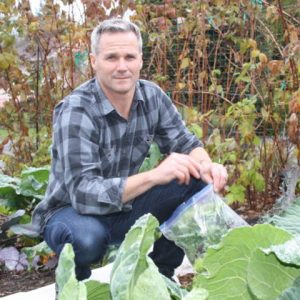 Gary MacDougall
Gary MacDougall
Gary MacDougall was recently featured in the Victoria News. He has created a gardening Meet Up where gardeners new and old, get together to share knowledge, and celebrate their time together learning. He shares all the work he and his wife does in their yard in posts and video on their Facebook page Grow the Food you Love.
Additional Q&A (Click to expand)
These are additional questions and answers that the panelists did not have time to answer during the live webinar.
These responses are all from Gary MacDougall
Q. I just read the very inspiring book ‘Sustainable Agriculture and Resistance : Transforming Food Production in Cuba’. Are you aware of how much Cuba has achieved in Agroecology? Other examples?
A. Yes! I recently watched a film on Cuba. They quickly transformed their landscapes into growing enough food locally for everyone. Detroit is also doing some amazing local growing.
Q. Lumber, soil and water are a recipe for rotting wood. The proliferation of lumber container BHAG (Better Homes And Gardens) gardens contributes to corporate industrial fibre mining. Please don’t clearcut our exploited forests for your gardens!! Do you recommend deep bed gardening without the use of lumber?
A. I always try to talk people out of raised beds. They aren’t necessary. I tell people how we simply ripped up our lawn, put down 6 inches of soil and planted into it. I agree, we need to protect our forests like our lives depend on them! Because they do.
Q. What is the minimum depth of soil a fruit tree needs or say a bluberry bush. We have layer of rock under our house and garden
A. Blueberry plant roots don’t go down too far. Neither do fruit trees. I would bring in as much soil as you could afford and plant into it. Another option would be to bring in a premium mix and plant into it. And everywhere else put down free wood chips from arborist companies. The chips will break down into an amazing growing medium in a few years in time for the roots of the trees and bushes to grow into them.
I’m always amazed to dig into our wood chip pathways! There are areas I’ve put down over a foot of free woodchips and they are gone after 5 years. And there is always lots of earthworms. We put our woodchips down all over our yards as a mulch and in pathways. It will turn your yard into a worm farm!
Q. We have a large backyard which we seldom use. We would gladly grow these suggestions but we are in our 80’s and unable to plant it or take care of it. Any suggestions?
A. The Compost Education Center is linking people looking for yards with people who have yards for others to grow food.
Q. I hear your concerns about Artificial Intelligence. However, precision agriculture enables highly efficient use of water, fertilizers and pesticides on farms. Such practices rely on digital control on applications. This greatly avoids wasted resources and increases production with reduced environmental damage. Precision agriculture literally means getting more with less.
A. I’m more inclined towards supporting farmers who work with nature and in doing so increase biodiversity, build soil carbon by not tilling, and or using chemical pesticides and herbicides.
Q. Backyard gardens are one thing. Can you suggest information for no-till on the medium scale of +0.5 acre. I am interested in for example drilling quinoa, bush beans or other higher pulses after a hay harvest.
A. I would suggest you check out the work of Gabe Brown. He does no till on 5000 acres. Also, he consults with the Soil Consultants. They are really going to scale now just landing General Mills as a main client.
Q. Paul Hawken’s Project Drawdown identifies Regenerative Agriculture as one of the top practices to reduce carbon and feed the population. Thank you for being so enthusiatic and spreading the word!
A. Yes, Drawdown! I’m familiar with the book. It is so important I think for people to realize we can start in our own yards to convert them to carbon sinks!
Q. How do you deal with Bears and a compost pile?
A. A friend from Canmore kept them out with electric fence.
Q. What do you do to make water needs reasonable?
A. We use drip irrigation. Our water bill only goes up $50 a month in the summer when it is on. I wish we were harvesting rain water off our roof though. Or our grey water.
Q. Are there any online resources that tell you what to plant/prepare now, year round? In order to help out people who are just starting their garden.
A. Follow me on Grow the Food you Love, Neil! I’ll walk you through the planting season. I do Q and A’s every Saturday morning! I should admit I got inspired and learned so much from Carolyn’s book, Zero Mile Diet.
Bouncing Forward to a One Planet Region: Could COVID-19 be a Social Tipping Point?
Self-Reliant Communities communities are based on the principles of shopping locally; recycling; regenerative agriculture; public transportation and supporting nature based activities. Local citizens must play a direct role in shaping these communities.
Dr. Trevor Hancock illustrates these values in his work for ‘bouncing forward’ post epidemic towards a One Planet Society. He is creating conversations for like-minded people to engage in shaping the future of their local communities. Earth Day Canada veterans, Nigel Seale, Jed Goldberg, and Paul Lussier, also discuss the importance of citizen participation in creating the original Earth Day events 50 years ago.
Presenter Bios (Click to expand)
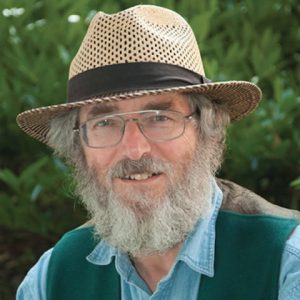 Dr. Trevor Hancock
Dr. Trevor Hancock
Dr. Trevor Hancock is public health physician and recently retired from his position as a Professor and Senior Scholar at the School of Public Health and Social Policy, University of Victoria. In the 1980s he helped to create the global healthy cities movement, and has been an internationally recognized leader in this area for more than 30 years. In recent years he has focused on the concept of a ‘One Planet’ community/region as a way to integrate the concepts of healthy and sustainable communities, and in retirement has started a new NGO, Conversations for a One Planet Region, to explore and popularize these ideas locally.
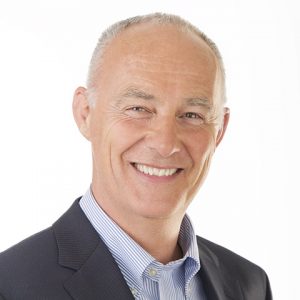 Nigel Seale
Nigel Seale
Nigel Seale is a Victoria, BC based realtor, who founded Earth Day Canada in 1990 and was global chairman of Earth Day International in both 1991 and 1992. His actions resulted in hundreds of thousands of people awakening to the necessity of caring for our planet… and he did it in the pre-internet and cell phone era.
Nigel was also responsible for helping to convince McDonald’s restaurant chain to switch from using styrofoam to 100% post-recycled paper and vegetable based dies in their tray liners – a major corporate first.
Nigel will share many inspiring stories and lessons learned.
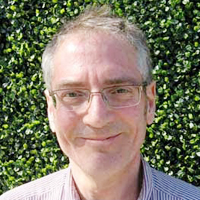 Jed Goldberg
Jed Goldberg
From 1991 to 2014, Jed Goldberg was the President of Earth Day Canada, a national charity with a suite of programs motivating environmental behavioural change in demographic audiences across the country.
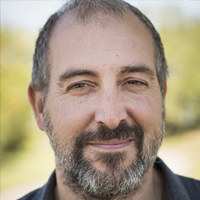 Pierre Lussier
Pierre Lussier
Pierre has been in charge managing and overseeing the design and implementation of programs and initiatives for Earth Day in Quebec since its founding in 1991 and is currently the president of Earth Day Canada.
Special Musical Guest
 Brian Yoon
Brian Yoon
Cellist Brian Yoon has been described by the CBC (Canadian Broadasting Corporation) as “Canada’s next cello superstar”. Currently the Principal Cello of the Victoria Symphony, he has been a guest principal with the Kingston Symphony and the National Arts Centre Orchestra.
EarthFest Hosts
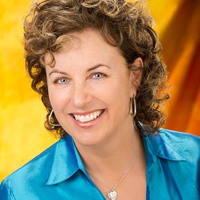 Frances Litman
Frances Litman
Since founding Creatively United in 2012, Frances Litman has helped bring more than 10,000 people together in person to showcase and share positive solutions that foster healthy, happy and more resilient communities.
Through multiple zero-waste sustainability showcases, numerous live events, educational talks, collaborative partnerships and creative connections, a video series, plus CreativelyUnited.org’s free community information network, resource and solutions sharing hub, Frances continues to forward transformational possibilities for a more just and sustainable world benefitting all.
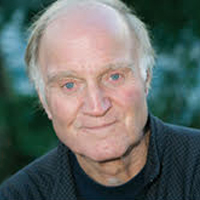 Jon O’Riordan
Jon O’Riordan
Jon O’Riordan is a Victoria Philharmonic violist and choir member, and the founder of the Gail O’Riordan Climate and the Arts Legacy Series. He obtained an MA degree in Geography from the University of Edinburgh and a PhD from the University of British Columbia.
Jon worked in the public service throughout his career first with the Federal Government and then with the Province of British Columbia. He completed his full time work as Deputy Minister for the Ministry of Sustainable Resource Management. After leaving government, he taught a graduate course in Resource Planning and Public Policy at UBC and has since undertaken research on watershed governance for the Polis Project on Ecological Governance at University of Victoria and on climate change adaptation at Simon Fraser University.
Our EarthFest Partners

Creatively United is honoured to partner with The Gail O’Riordan Climate and the Arts Legacy Series in presenting Earthfest, as well as a continuing series of on-line presentations throughout the year.
The Climate and the Arts series will be inclusive of the entire arts community, who, using creativity, will merge the growing public interest in finding solutions to the growing climate crisis and loss of biodiversity with the arts to educate, inspire and motivate behavioural change.
Performances will be held throughout the region when public events are permitted again. Climate and the Arts collaborators will portray a short story on the climate crisis based on the overall theme of disruption and optimism. The premise is that disruption will occur with extreme weather events, but by adopting new and challenging solutions to reduce our carbon footprint, we can adapt to the changing climate.
Collaborative partnerships are already underway with Pacific Opera, Ballet Victoria, the Victoria Philharmonic Choir, Victoria Conservatory of Music and the Victoria Chamber Orchestra. See ClimateandtheArts.org for more information.
Ecoforesty Institute Society
Wildwood is a 77-acre ecoforest nestled along the shores of Quennell Lake just north of Ladysmith, British Columbia. It lies within the traditional territories of the Stz’uminus and Snuneymuxw Coast Salish First Nations.
A rare and unique demonstration ecoforest, Wildwood is home to a good many original Coastal Douglas-firs, representing a vanishing ecosystem once abundant on Vancouver Island. Only .5% of these forests remain. These ancient, original trees stand among a profusion of western red-cedar, bigleaf maple, flowering dogwood and arbutus trees, and bring an amazing presence to the forest, stately in their towering height and size.
The trees of Wildwood have been selectively harvested since 1945 in a manner that respects the needs of the forest and its species. Yet, Wildwood represents a fully functioning ecosystem that provides purified air, water filtration, carbon sequestration and other services in an ongoing cycle of life.
Wildwood Ecoforest is owned by the Ecoforestry Institute Society, a registered charitable society, and held in trust for the people of British Columbia. Visit EcoForestry.ca to learn more.
